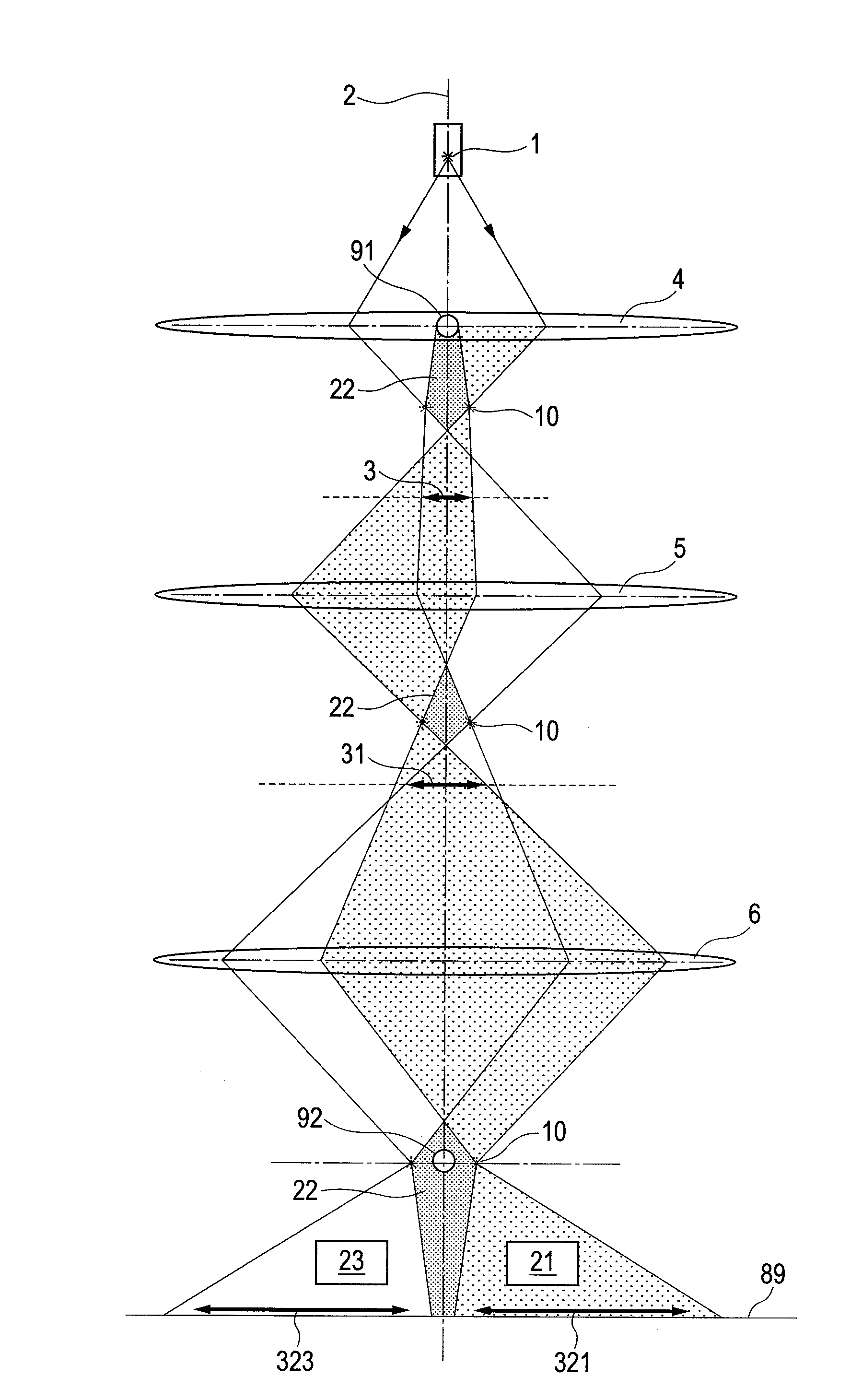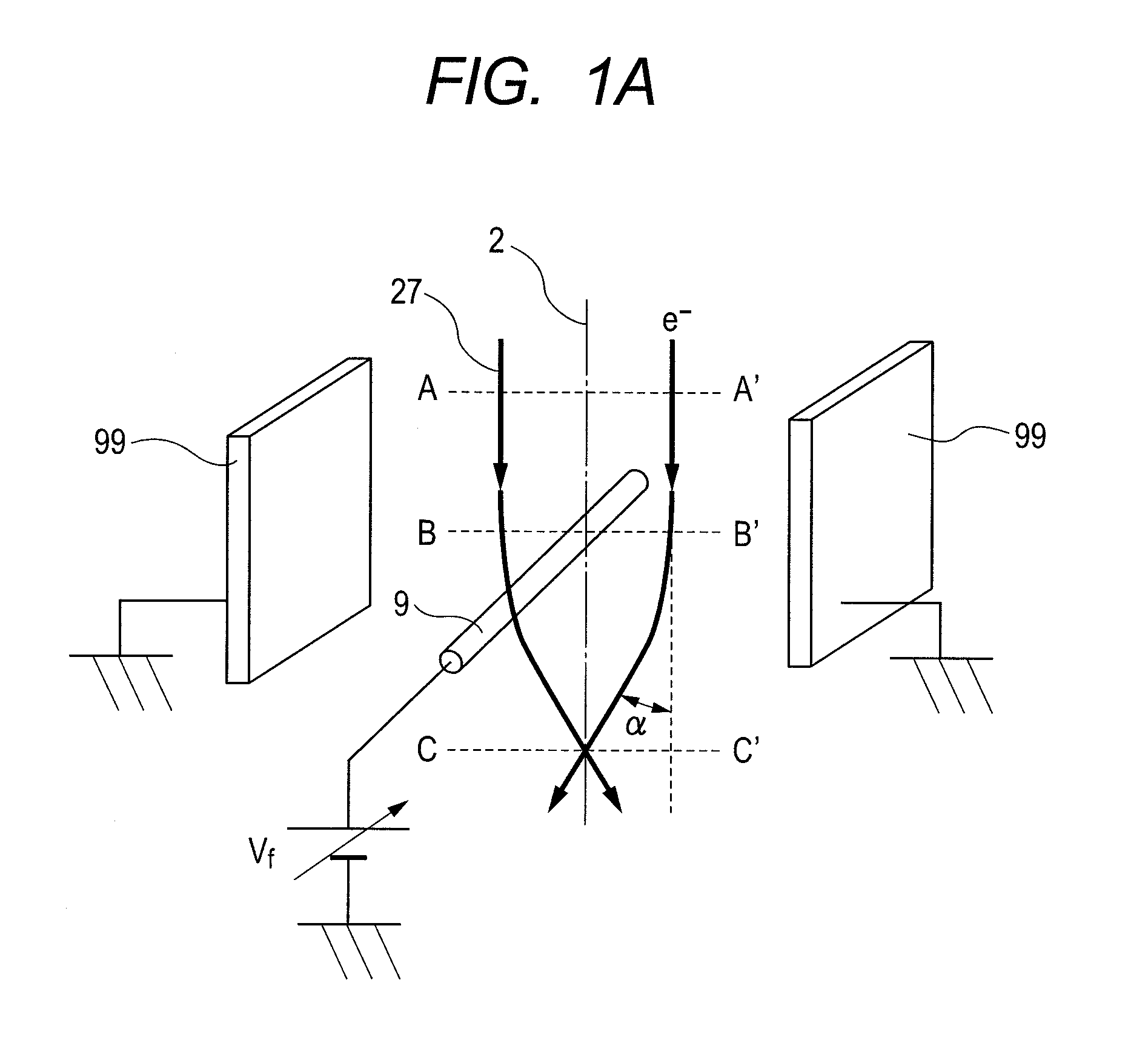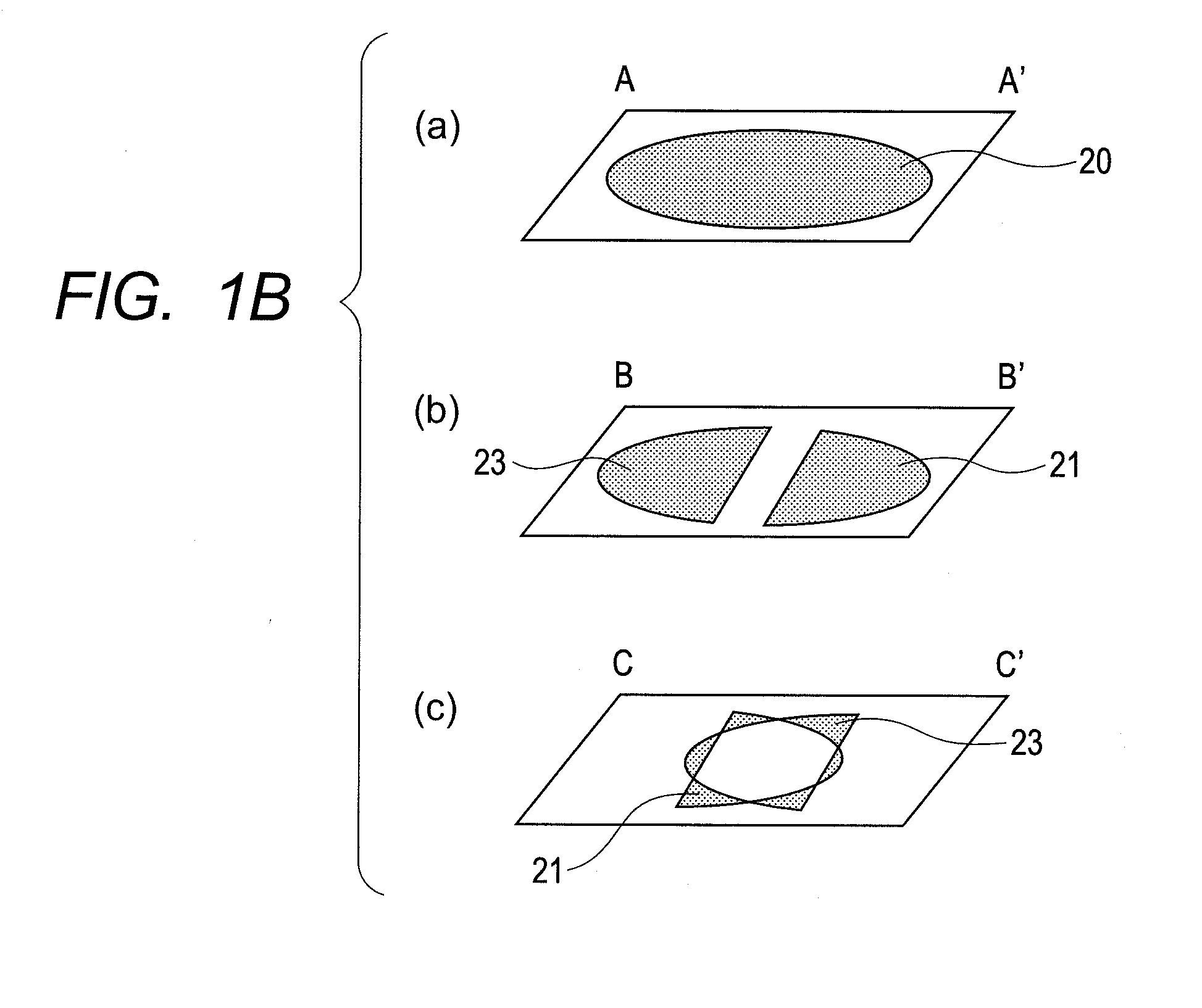Transmission electron microscope and method for observing specimen image with the same
a transmission electron microscope and specimen technology, applied in the field of transmission electron microscope and a method for observing a specimen image with the same, can solve the problems of long time required for obtaining images, low time resolution, and difficulty in observing specimens from a plurality of directions at a time, and achieve the effect of improving the observation efficiency of an observer
- Summary
- Abstract
- Description
- Claims
- Application Information
AI Technical Summary
Benefits of technology
Problems solved by technology
Method used
Image
Examples
first embodiment
[0083]As a first embodiment according to the present invention, an example of a transmission electron microscope on which an optical system shown in FIG. 4 is mounted is shown in FIG. 12. In FIG. 12, an electron-optical system has: an electron source (or an electron gun) 1; an acceleration tube 40; a condenser optical system (a first condenser lens 41 and a second condenser lens 42); and an imaging optical system (an objective lens 5, a first imaging lens 61, a second imaging lens 62, a third imaging lens 63, and a fourth imaging lens 64). The electron-optical system is assembled in a vacuum chamber 18 and the vacuum chamber is continuously exhausted with a vacuum pump.
[0084]Further, the reference numeral 19 represents a control unit of the electron source, 49 a control unit of the acceleration tube, 48 a control unit of the first condenser lens, 96 a control unit of a first electron biprism, 47 a control unit of the second condenser lens, and 39 a control unit of a specimen 3 for c...
second embodiment
[0100]FIG. 14 shows an example of a transmission electron microscope on which an optical system shown in FIG. 8 is mounted. A condenser aperture 15 is disposed in the vicinity of the principal plane of a second irradiation lens 42 and a first electron biprism 91 is disposed on the upstream side of the condenser aperture 15. The reference numeral 17 represents a control unit to control the condenser aperture 15. The other part of the configuration is the same as the configuration shown in FIG. 12, but only one imaging unit 79 is installed. That is, one imaging unit 79 having a record area large enough to record two independent specimen images 321 and 323 is envisaged. In the case of the system, since only one reorder is used, unlike the case of the first embodiment, the sensitivity adjustment between imaging units (Steps 3 and 4 in FIG. 13) is not required. An output unit 76 is an example of a type of individually drawing two images 761 and 762.
[0101]In the present embodiment, in the...
third embodiment
[0102]FIG. 15 shows an example of envisaging an interference type electron microscope that uses two electron biprisms in a condenser optical system shown in FIG. 9. In the condenser optical system, a third electron biprism 93 is disposed in a space 22 at the shadow of a first electron biprism 91, two electron beams 21 and 23 are deflected, and the same prescribed region of a specimen 3 is irradiated. The reference numeral 98 represents a control unit of the third electron biprism. With regard to an adjusting method of the optical system, in the flow shown in FIG. 13, processing on the third electron biprism 93 is added in addition to the processing on the first electron biprism 91 at steps 5 to 10.
[0103]By the configuration, Fresnel diffraction waves caused by the third electron biprism 93 do not appear. Other details are the same as Examples 1 and 2 described earlier. As an image output apparatus 76, for example, a stereoscopic monitor using a stereo viewer of a deflection type is ...
PUM
 Login to View More
Login to View More Abstract
Description
Claims
Application Information
 Login to View More
Login to View More - R&D
- Intellectual Property
- Life Sciences
- Materials
- Tech Scout
- Unparalleled Data Quality
- Higher Quality Content
- 60% Fewer Hallucinations
Browse by: Latest US Patents, China's latest patents, Technical Efficacy Thesaurus, Application Domain, Technology Topic, Popular Technical Reports.
© 2025 PatSnap. All rights reserved.Legal|Privacy policy|Modern Slavery Act Transparency Statement|Sitemap|About US| Contact US: help@patsnap.com



